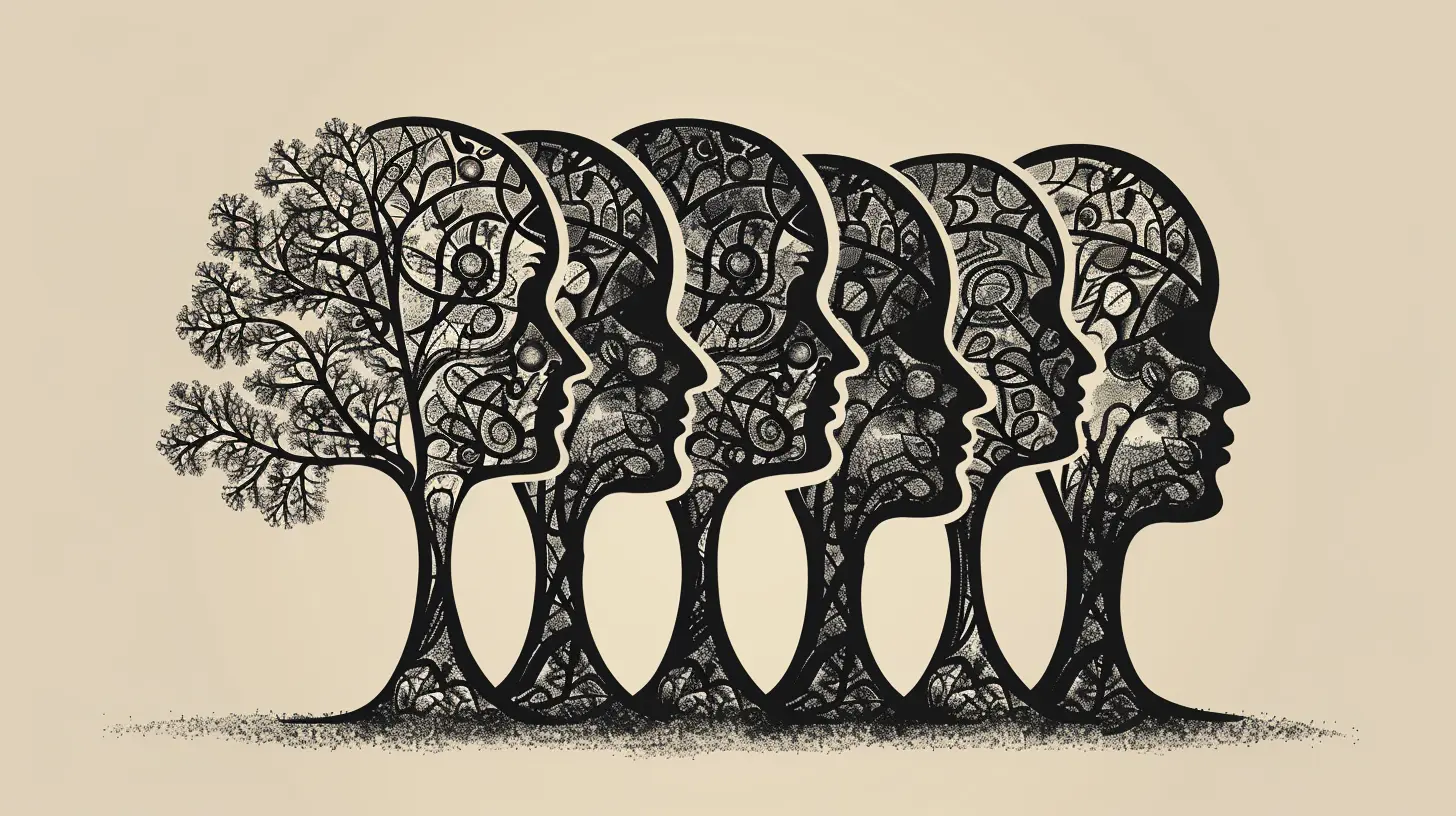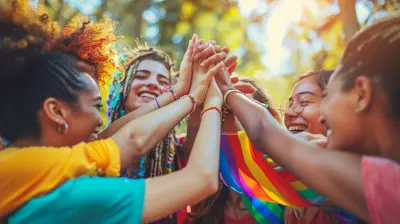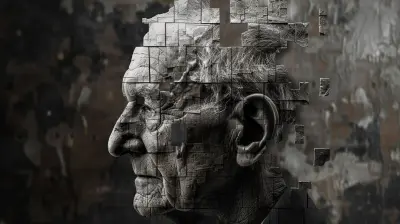Understanding the Dynamics of Group Therapy
30 July 2025
Group therapy. Just hearing the phrase might stir up a mix of curiosity, hesitation, and maybe even a bit of anxiety. Sitting in a circle with strangers, talking about your feelings? Yep, it's exactly what you think—minus the awkward movie cliché and with a whole lot more power.
At its core, group therapy is about connection. It brings people together who are battling similar issues—be it anxiety, depression, addiction, trauma, or even self-doubt—and gives them a space to heal and grow. But don't worry, it's not about spilling your deepest secrets on day one or hugging it out every session. It goes way deeper and works in ways you might never expect.
In this article, we’re going to break down what group therapy really is, why it works, and how those seemingly random people in the room can turn into your personal cheerleaders (or mirrors that show you things you didn’t even realize about yourself). Grab a comfy chair, because we're diving right in.
What Is Group Therapy Anyway?
Let’s start with the basics. Group therapy is a form of psychotherapy where a small group of people—usually between 6 to 12—meet regularly to talk, share, and support each other under the guidance of a trained therapist.Think of it like team sports for your mental health. You’ve got teammates who get what you’re going through, a coach who knows how to guide the play, and a shared goal: healing, growth, and better mental wellbeing.
But it’s not just a chat session. The therapist guides the conversations, sets boundaries, and ensures that the space stays safe and constructive. There are often specific goals and structures tailored to the needs of the group—whether it’s managing social anxiety, overcoming grief, or improving interpersonal skills.
Why Do People Choose Group Therapy?
Now, you might be wondering, "Why would anyone choose to share their issues with strangers when they could talk one-on-one with a therapist instead?"Fair question! Here’s why group therapy is a surprisingly powerful choice:
1. You Realize You’re Not Alone
This might sound obvious, but hearing someone say out loud the exact thing you’ve been silently struggling with? That’s a game-changer. It’s comforting to know you’re not the only one navigating certain emotional storms.2. Different Perspectives = Bigger Growth
Think of each group member as holding a mirror up to you from a different angle. Their reactions, feedback, and stories help you see your own thoughts and behaviors more clearly. Sometimes someone else’s perspective can light up a part of your story you didn’t even know was in the dark.3. It Builds Real-World Skills
Group therapy is like a mini practice ground for real-life relationships. You get to work on how you communicate, assert yourself, handle conflict, or express vulnerability—with real feedback in a safe environment.4. The Support Is Next-Level
There’s something uniquely healing about hearing "Me too" from someone who’s been there. The empathy, validation, and encouragement in a well-run group can lift you up in ways you'd never expect.
The Magic Ingredients That Make Group Therapy Work
Okay, so what makes group therapy tick? Let’s decode the psychology behind it.Safe and Structured Environment
Group therapy isn’t a free-for-all. The therapist sets clear ground rules about confidentiality, respect, and how to give feedback. This structure makes people feel safe enough to open up.Shared Humanity
Ever notice how hearing someone else’s story instantly softens your inner critic? That’s because shared vulnerability builds compassion—not just for others, but for yourself too. Group therapy taps into our basic human need for connection and belonging.The Power of Feedback
In real life, people don’t often tell you how you come across. In group therapy? You’ll get honest, respectful feedback that helps you notice patterns you might’ve missed. It’s like emotional GPS guiding you to better self-awareness.
The Different Flavors of Group Therapy
Not all group therapy looks the same. Depending on what you’re dealing with, there are different types of groups that focus on different goals.Process-Oriented Groups
These are the classic therapy groups you may have seen portrayed in movies (though with way less drama). The focus is on exploring emotions, relationships, and the here-and-now interactions between members.Psychoeducational Groups
These are more structured and may feel a bit like a class. They educate members about specific issues (like anxiety, addiction, or trauma) and teach coping strategies in a group setting.Skill-Building Groups
Perfect for folks who want to sharpen specific emotional tools—like managing anger, improving communication, or setting boundaries. You’ll practice and roleplay in the group.Support Groups
While not always led by a therapist, support groups bring together people with shared experiences (like grief or chronic illness) to offer mutual encouragement, emotional support, and shared wisdom.What Actually Happens in a Group Therapy Session?
So, what do you actually do in group therapy? No, it’s not all “Tell us your deepest secret!” from the start.Most sessions start with a check-in, where each member shares how they’ve been feeling or updates since the last session.
Then the therapist might guide a conversation on a specific theme or invite members to reflect on a recent challenge. Sometimes it’s open-ended, letting members take the lead. Other times there might be an activity or guided discussion.
You might:
- Share a personal story
- Practice a new communication skill
- Give or receive feedback
- Reflect on how someone else's experience relates to your own
And don’t worry—participation is encouraged, but never forced. You can ease into it at your own rhythm.
The Common Myths (And Why They’re Totally Off)
Let’s bust a few myths that might be holding you back:1. “I’ll be forced to talk in front of everyone.”
Totally false. You can talk as much or as little as you feel comfortable. No judgment.2. “It’s just a pity party.”
Nope. Venting happens, sure. But the real power is in insight, accountability, and problem-solving with others' support.3. “The therapist won’t pay attention to me in a group.”
Actually, the therapist is trained to observe subtle dynamics and ensure everyone gets value from the session.4. “I’ll be judged.”
Understandable fear, but remember—everyone’s in the same emotional boat. Most members are too busy navigating their own stuff to judge yours.Who Benefits Most from Group Therapy?
Honestly? Just about anyone can benefit. But it's especially transformative for:- People feeling isolated or misunderstood
- Folks struggling with social anxiety or relationship issues
- Those in recovery from addiction, trauma, or grief
- Individuals exploring identity, self-esteem, or emotional expression
It’s a gentle but powerful reminder: you're not broken, you're human—and healing doesn't have to be a solo mission.
Tips for Getting the Most Out of Group Therapy
Thinking about giving group therapy a try? Here are some tips to make the most of the experience:Be Open (But Go at Your Own Pace)
You don’t have to spill everything at once. But do stay open to the process—even when it feels uncomfortable. Growth lives just outside your comfort zone.Listen Deeply
Sometimes you’ll learn the most when you're not talking. Let others’ stories hit you—you might be surprised by what surfaces.Ask Questions
Curious about someone’s experience? Ask (respectfully, of course). It deepens connection and creates chances to relate.Reflect Between Sessions
Keep a journal. Think about what came up in the group. What emotions did it stir? What did you learn about yourself?Is Group Therapy Right for You?
Group therapy isn’t a magic bullet, and it’s not for everyone. But if you’re feeling stuck, disconnected, or just tired of holding it all in—this might be the safe, supportive space you didn’t even know you needed.Whether you gel with the group right away or it takes a few sessions, remember—healing is a journey. And sometimes the best people to walk it with… are the ones stumbling along beside you.
Final Thoughts
Understanding the dynamics of group therapy is like peeling back layers of your emotional onion—in the presence of others doing the same. It’s honest, it’s raw, but it’s also beautiful and empowering.In a world that’s becoming more digitally connected-yet-emotionally-isolated, group therapy offers something refreshingly real: shared stories, shared struggles, and shared breakthroughs.
So if you’ve ever whispered to yourself, “I wish I wasn’t going through this alone,” guess what? You don’t have to.
all images in this post were generated using AI tools
Category:
Group TherapyAuthor:

Jenna Richardson
Discussion
rate this article
1 comments
Drake McLain
Fascinating insights! How do different group dynamics influence individual healing and growth in therapy?
August 19, 2025 at 4:27 PM

Jenna Richardson
Thank you! Group dynamics can significantly enhance individual healing and growth by fostering a sense of belonging, providing diverse perspectives, and facilitating shared experiences, all of which can enrich the therapeutic journey.


